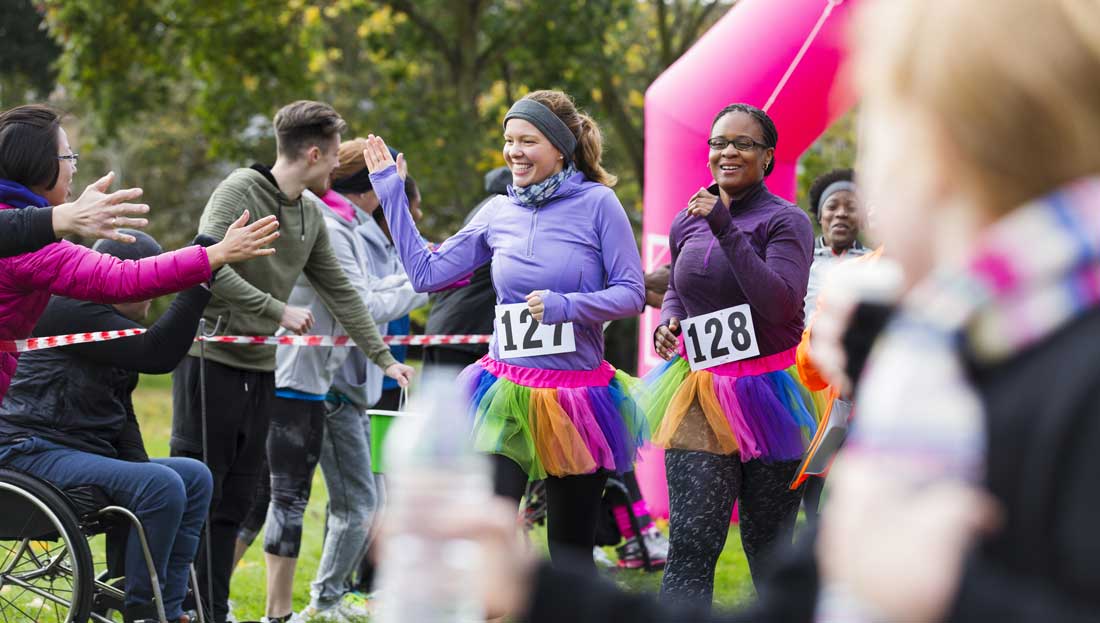
Study Unlocks Key to Happiness

Physical activity has long been known to reduce depression and anxiety, and is commonly recommended to prevent or cure negative mental health conditions. However, less is known about the impact of physical activity on positive mental health conditions, such as happiness and contentment.
Dr. Weiyun Chen, University of Michigan associate professor in kinesiology, wanted to know if exercise increased positive mental health in the same way it reduced negative mental health. Specifically, researchers examined which aspects of physical activity were associated with happiness, and which populations were likely to benefit from the effects.
To that end, Chen and co-author Zhanjia Zhang, a doctoral student, reviewed 23 studies on happiness and physical activity. The 15 observational studies all showed a positive direct or indirect association between happiness and exercise. The eight interventional studies showed inconsistent results.
The studies included health information from thousands of adults, seniors, adolescents, children, and cancer survivors from several countries. Several themes emerged from their review, which was published online in the March 24 issue of the Journal of Happiness Studies.
“Our findings suggest the physical activity frequency and volume are essential factors in the relationship between physical activity and happiness,” Chen says. “More importantly, even a small change of physical activity makes a difference in happiness.”
Findings suggest a threshold effect for the relationship of happiness and physical activity––several studies found that happiness levels were the same whether people exercised 150 to 300 minutes a week, or more than 300 minutes a week.
Specifics: Active and Happy?
The review of observational studies found that compared to inactive people, the odds ratio of being happy was 20, 29 and 52% higher for people who were insufficiently active, sufficiently active or very active, respectively. Additional analysis revealed several interesting findings for specific groups:
Youth
Several studies reviewed the relationship between physical activity and happiness in youth. One study found that youth who engaged in physical activity once a week compared to none had 1.4 times the odds of being happy if they were normal weight, and 1.5 times the odds if overweight. Another study found that adolescents who were physically active at least twice a week had significantly higher happiness than those who were active once or less a week. An additional study found that college students who participated in physical activity had 1.3 times the odds of being happy than peers who didn’t participate.
Older Adults
Three studies looked at happiness and activity in older adults. One found that exercise was associated with happier adults. Another found that the total minutes of exercise an individual performed per week was positively related to happiness. However, the findings suggest that happiness was mediated by health status and/or social functioning. In other words, individuals who were healthy and socially connected were, unsurprisingly, more likely to be happy than their less-healthy, more socially isolated counterparts, regardless of how much they exercised.
Special Populations
Three studies looked at special populations. Among ovarian cancer survivors, meeting the 150 minutes of moderate to vigorous physical activity was significantly associated with happiness level. In children and adolescents with cerebral palsy, physical activity predicted happiness level, and among drug abusers, the number of weekly exercise sessions, regardless of intensity, was slightly associated with happiness.
In the intervention studies, physical activity included aerobic, mixed school activity classes, and stretching and balance exercises or 30 to 75 minutes, one to five times a week for seven weeks to a year. Four of the intervention studies showed a significant difference in the change in happiness levels between the intervention group and control group, and three did not.
The review only looked at articles in peer-reviewed journals in English, which could lead to publication bias and overestimating the positive relationship between physical activity and happiness. Because there were limited randomized control trials, the researchers could not establish causation between happiness and physical activity.
How to Apply These Research Findings
As a health and exercise professional, a major part of your job is keeping your clients motivated and committed to working out, both with and without you. While many people possess sufficient intrinsic motivation, others need continual reminding and reassurance that their efforts will pay off. In addition to better health, lowered stress levels and reduced risk of disease, this study suggests you can add increased happiness to the list of key benefits of exercise of which your clients should be aware. Given the high incidence of depression and other mood disorders among Americans, this could be a powerful motivator for some individuals.
Happiness has become a major area of research in the past decade and, for those of us who are familiar with the power of exercise to elevate mood, these findings come as no surprise. However, for those who don’t find exercise enjoyable, finding the right type of exercise is crucial to both adherence and happiness. After all, your client isn’t going to feel happy doing an activity or exercise he or she hates, no matter how good the benefits might be. Take the time to help your clients find activities they enjoy and they will undoubtedly get fitter and happier as a result.

More Articles
- Certified™: June 2018
ACE-SPONSORED RESEARCH: Is HIIT Resistance Exercise Superior to Traditional Resistance Training?
Contributor
- Certified™: June 2018
How to Keep the Positive Energy Flowing (Even When You’re Not Feeling It)
Contributor
- Certified™: June 2018
What Pace Should I Run, Coach?
Health and Fitness Expert
 by
by 

